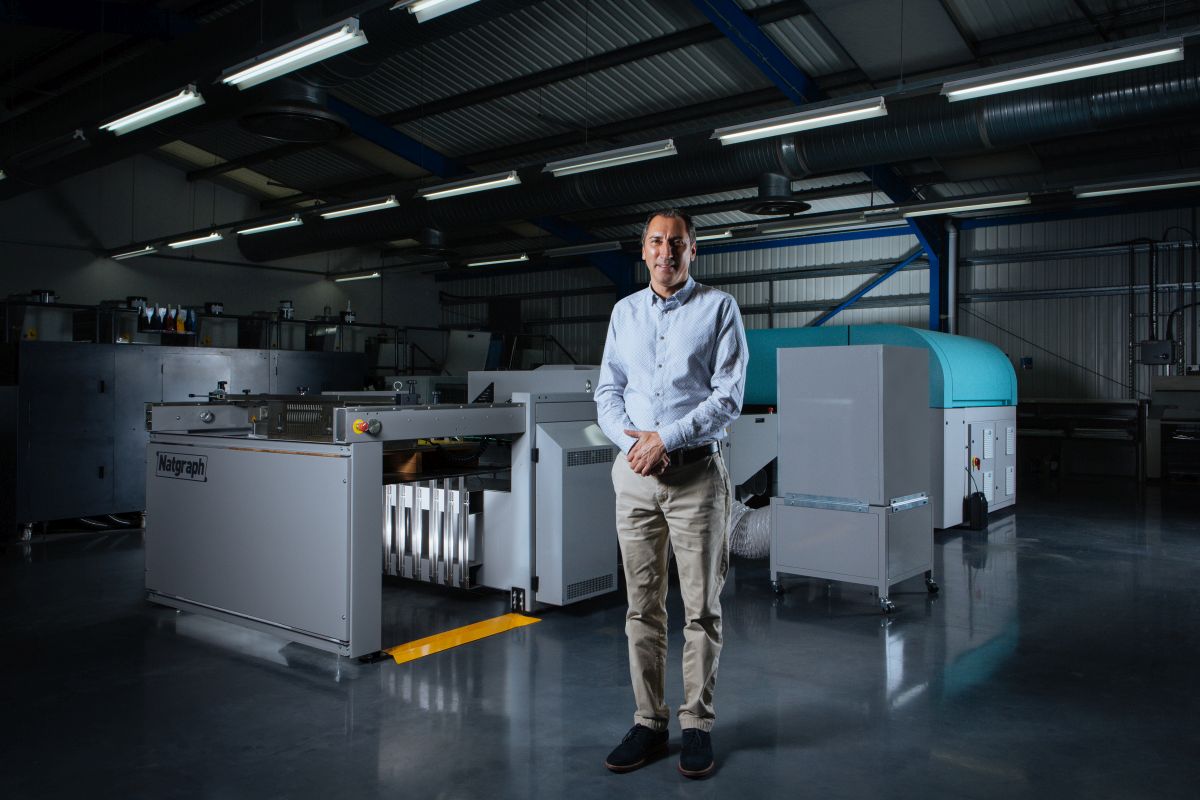Nestled in the picturesque Kent countryside, Reflex Printed Plastics is a plastics printer with a proud 43-year heritage. The company produces a huge range of high quality printed plastic products for a variety of customers, using a mix of digital wide format, litho and screen solutions. Popular products include: POS display materials, stickers and decals, window films, mouse pads and folders, as well as highly-specialised lenticular prints.
“Our customers in the UK and abroad know us for quality and for reliability,” says the company’s managing director, Antony Jones. “We’re always looking at the latest technologies on the market to make sure we continue to deliver on that promise and continue to exceed customer expectations. The market is changing and, like other PSPs across the industry, we’re seeing an increasing trend towards short-run work and fast turnaround times. As a consequence, we identified a specific need for a fixed format, highly automated and very high quality digital press.
“We talked to a range of manufacturers about this and the feedback we got from most was that not only did they not have any such machine, they had no interest in creating one either. We found that digital press manufacturers are overwhelming focused on large format. We’ve been using a Fujifilm Acuity Select HS flatbed for five years and we’re very happy with it, but we wanted another option that could give us the same quality at greater speeds and with a format size that fitted more easily into our existing finishing systems.
“Like all the other manufacturers we spoke to, Fujifilm had no machine in its existing portfolio that ticked all the boxes we were looking for, but – unlike all the others – they listened to us. They saw the market potential, and working with Inca Digital, they built the Acuity B1.
“Of course Inca Digital and Fujifilm have worked together successfully before, most notably on the Onset X platform. The combination of Inca hardware and Fujifilm inkjet technology is well-proven and established, so we were delighted to see them combine their respective expertise again to create the Acuity B1.
“In October 2017, we were pleased to become the first beta site in the world for this machine and we’ve been working closely with both Fujifilm and Inca to refine and develop it since then, including the installation of a camera system to enhance registration.
“The quality we’re seeing on the press is very, very close to litho levels and, given the speed, format size and reduced finishing times that are now required, we’re able to deliver short-run work much faster and much more cost-effectively than we could in the past. In fact, on the Acuity B1, we can achieve up to 600% more print throughput compared with our flatbed press, and the substantial cost savings we’re seeing on printing short-run work is giving us the ability to take on jobs for which our litho press wouldn’t have been competitive.
“Moving more short-run work to the Acuity B1 from litho has also helped us dramatically reduce media waste, as well, of course, as plates and associated pre-press chemicals.”
Says Tudor Morgan, Sign and Segment Display Manager at Fujifilm Graphic Systems Europe: “For Fujifilm, ‘Value from Innovation’ is much more than just a slogan. In the Acuity B1 we’ve developed a machine unlike any other on the market. Reflex has seen first-hand the advantages it can bring, and increasing numbers of litho, screen and digital print businesses will also now start to see the benefits of this versatile and highly automated print system for producing rapid, high-quality, short-run print on a variety of substrates.”

